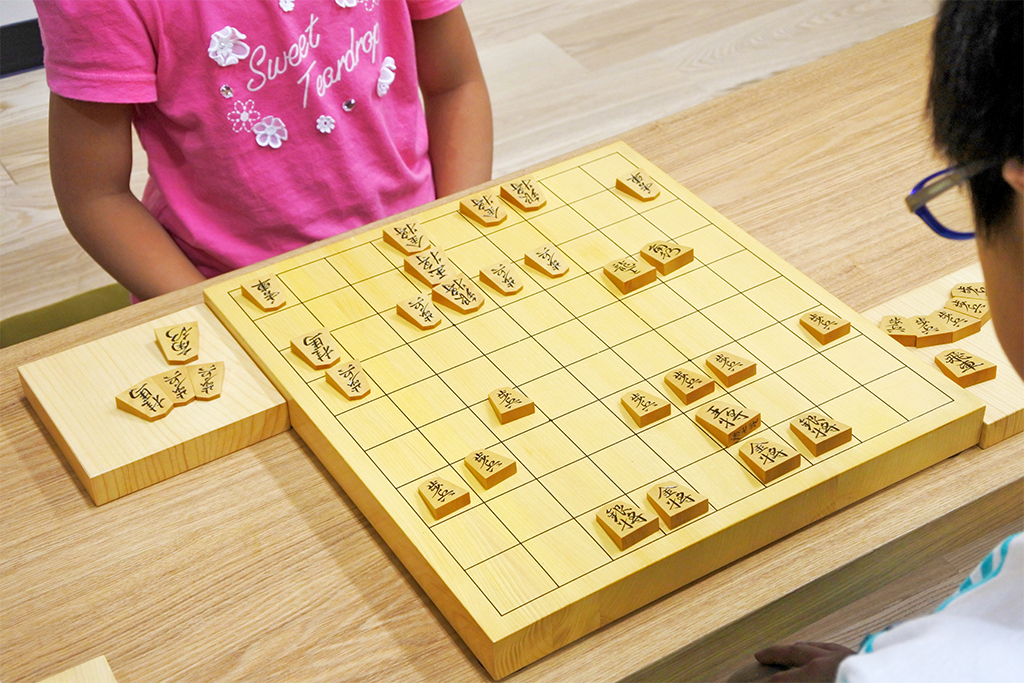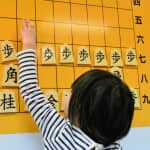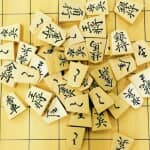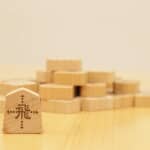Shogi 9 April 2020
Get Better Quickly! Effective Study Methods for Shogi Beginners #4 3-move calculation
Hi,
I am Takashi Araki, a Shogi instructor for i-tsu-tsu Shogi classes in Motomachi, Kobe.
Since this newsletter features “3-move calculation”, I will talk about it.
Let’s Learn What 3-move calculation is!
Writer: Takashi Araki, a former member of Shorei-kai, who has a third dank rank.

1. Why Do You Need To Calculate Future Moves?
There is one very important skill to play a Shogi game, which is to calculate future moves. Calculating future moves means that you expect what moves your opponent will make or what situations you will have.
If things go your way, that’s great! However, real games are not as simple as that. You need to have several game plans against any situation: preparing things beforehand after reading your opponent’s intentions or having a dry spell to accomplish your goal.
When you make a plan logically, you need to calculate future moves. You may well wonder how to calculate them. Don’t worry, I’m going to give you informative tips to develop your skills to calculate future moves.
2. Learn What an Ideal Form Is
As I mentioned before, calculating moves means thinking about the future. It sounds like something related to SF, right? What I’m trying to say is that it is similar to thinking about your future dream. If you have your specific dreams such as becoming a soccer player or a patissier, you have already admired and appreciated the professions.
This also applies to Shogi. If you know what situations you can play well in, you can decide how to move pieces appropriately. If you don’t know them, you can’t do that.
If you aim to develop your skills to calculate future moves, it’s very important you accumulate experience in playing and winning games. Through those experiences, you can have success and failure examples as many as possible. Strong players store all information from their experiences and can choose the best move quickly and accordingly.
3. Not to Calculate Too Many Moves Ahead
Once you learn a few success examples, next, you might want to step up to the level of reading moves ahead. You may observe people reading the moves in the classroom or dojo, saying things like, “Do this, then come this way,” and so on. You can do it like that.
The thing to keep in mind is not to think far ahead. If you’re reading the wrong way, no matter how deeply you think, it will be in vain. I would recommend reading two moves ahead at the beginning. Most textbooks tell you to read three moves ahead, but even three moves can be very hard for beginners. Let’s try to read two moves ahead now.
Get in the habit of thinking about what kind of move your opponent is going to make before you actually move a piece. Once you get used to reading two moves ahead, you are much less likely to make simple mistakes. For beginners, this is a huge improvement.
When you get the hang of reading two moves ahead, you will be able to think three moves ahead with little difficulty. If you want to work out reading moves ahead, you need to learn about an ideal piece formation and practice reading two moves ahead.



